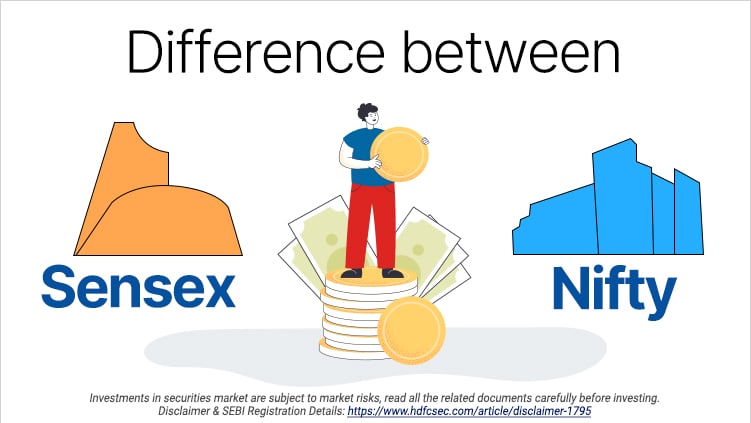What is the difference between Sensex and Nifty?
Stock market indices are important tools used to gauge the performance of a stock market. An index can serve as a benchmark to measure the performance of a portfolio of Stocks , a particular market or a market sector.
The basket of securities that a stock market index tracks can range from different sectors, industries or market capitalization. Nifty 50 and S&P BSE Sensex are two of the most widely followed share market indices in India. While both are used to measure the performance of the Indian stock market, there is some key difference between Nifty and Sensex.
There are two major stock exchanges in India, the National Stock Exchange of India (NSE) and the Bombay Stock Exchange (BSE). Nifty and Sensex are the benchmark indices of these exchanges and are the most important indices in Indian markets. Here are some of the factors that differentiate them from each other.
Meaning
Nifty is made up of the words ‘National Stock Exchange’ and ‘Fifty’. This index comprises the top 50 stocks listed on the NSE which gives it the name Nifty50. On the other hand, Sensex is a combination of the words ‘Sensitive’ and ‘Index’. The index comprises the top 30 stocks listed on the BSE.
Related Exchange
The Sensex is operated by and is a benchmark for the stocks listed on the BSE while the Nifty is a benchmark for the stocks listed on the NSE. Nifty is operated by India Index Services and Products Ltd, a subsidiary of NSE.
Founding date
Sensex was founded in 1986 while Nifty was founded in 1997.
Scope
Nifty 50 is considered to be a more representative index of the Indian stock market as it covers a wider range of sectors and includes companies from various industries. It covers 24 sectors. Whereas S&P BSE Sensex is considered to be more focused on large and well-established companies in a lesser number of sectors, which is 13 sectors.
Methodology
Both, Nifty and Sensex are calculated using the free-float market capitalization weighted methodology. This method takes into account the total market value of the stocks in the index in relation to the base period. The base period for Nifty is November 3, 1995, while that for Sensex is 1978-79. The base number for Nifty is 1,000 and for Sensex, it is 100.
Volume and Liquidity
Both the indices, Nifty and Sensex are prominent and widely considered by investors in the country. However, the volume and liquidity of Sensex are relatively lower than that of Nifty.
The health of a nation’s economy and financial markets can often be gauged by the performance of its stock market indexes, for India, the two stock market indices are the Nifty and Sensex. When these indices show positive growth, it indicates a strong investment culture, which is a reflection of increased investor confidence. Both provide investors and traders with certain perspectives on the performance of the Indian market and can be used to gauge the direction of the market. While there are certain differences between the two indices, they can be used in tandem to gain a comprehensive view of the Indian stock market.
Related Posts
Don't miss another Article
Subscribe to our blog for free and get regular updates right into your inbox.
Categories
newsletter
 HSL Mobile App
HSL Mobile App 



